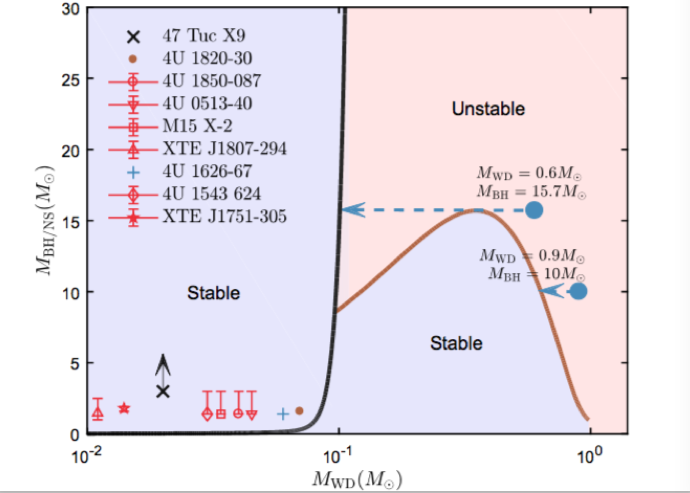
Figure caption:Variation of the critical BH mass with the WD mass for f = 0.9 and λ = 0.99. For the parameters beyond the critical BH mass (brown line), the mass transfer is dynamically unstable. The two blue dashed lines show the evolutionary track (from the filled circle to the arrow). The space is divided into two regions, sub-Eddington (left) and super-Eddington (right), by the black solid line. The nine UCXBs are well located in the sub-Eddington and stable region, where eight UCXBs are NS candidates and the other one is a BH candidate.
Author: Yize Dong, Weimin Gu, Tong Liu, Junfeng Wang
Abstract:
Gamma-ray bursts (GRBs) are luminous and violent phenomena in the universe. Traditionally, long GRBs are expected to be produced by the collapse of massive stars and associated with supernovae. However, some low-redshift long GRBs have no detection of supernova association, such as GRBs 060505, 060614 and 111005A. It is hard to classify these events convincingly according to usual classifications, and the lack of the supernova implies a non-massive star origin. We propose a new path to produce long GRBs without supernova association, the unstable and extremely violent accretion in a contact binary system consisting of a stellar-mass black hole and a white dwarf, which fills an important gap in compact binary evolution.
Accepted for publication in MNRAS Letters
From